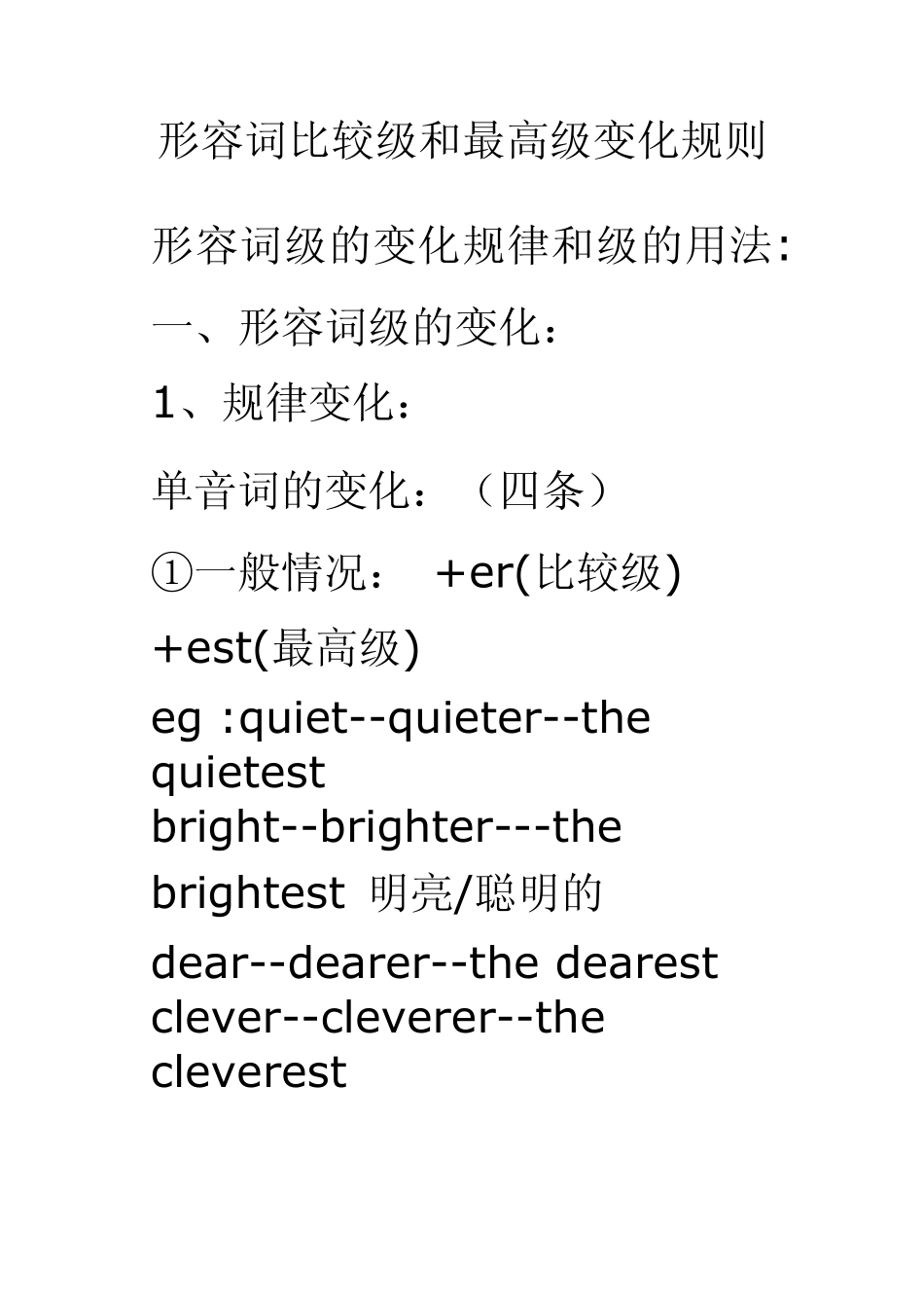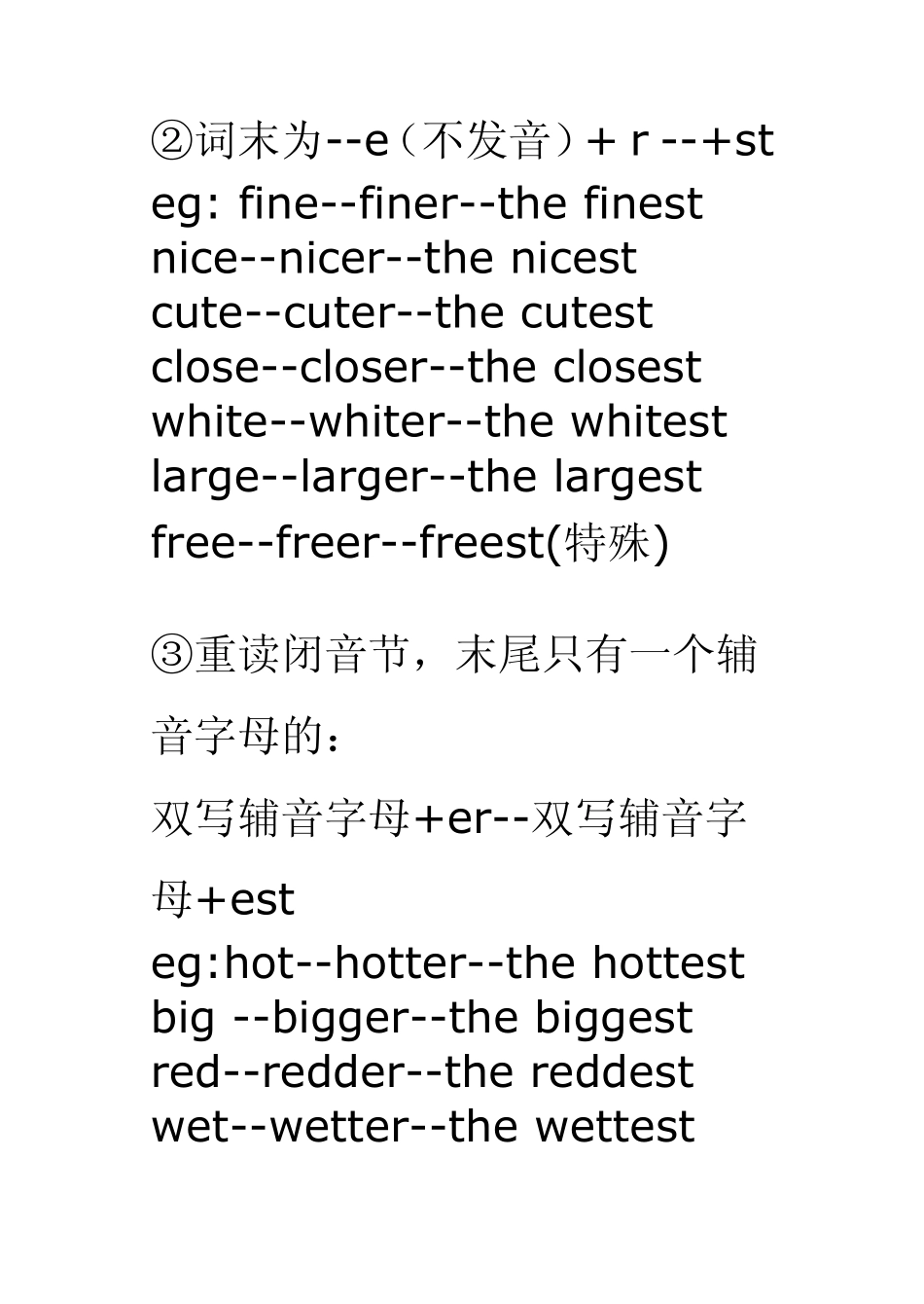形容词比较级和最高级变化规则 形容词级的变化规律和级的用法: 一、形容词级的变化: 1、规律变化: 单音词的变化:(四条) ①一般情况: +er(比较级) +est(最高级) eg :quiet--quieter--the quietest bright--brighter---the brightest 明亮/聪明的 dear--dearer--the dearest clever--cleverer--the cleverest ②词末为--e(不发音)+ r --+st eg: fine--finer--the finest nice--nicer--the nicest cute--cuter--the cutest close--closer--the closest w hite--w hiter--the w hitest large--larger--the largest free--freer--freest(特殊) ③重读闭音节,末尾只有一个辅音字母的: 双写辅音字母+er--双写辅音字母+est eg:hot--hotter--the hottest big --bigger--the biggest red--redder--the reddest w et--w etter--the w ettest sad--sadder--the saddest fat--fatter--the fattest thin--thinner--the thinnest fit--fitter—the fittest ④少数以辅音字母+y结尾的双音节 原根词: 变 y为 i+er 变 y为 i+est Happy-happier-the happiest 3. 英语里有些形容词由于其词义而不可能有比较级形式 right wrong full empty round complete dead daily 三、不规则形容词的比较级和最高级形式 good well betterbest bad illworseworst many much moremost little few lessleast far fartherfarthest furtherfurthest 第二节 副词比较级和最高级的形式 副词比较级和最高级的变化形式与形容词基本上一样 一般 副词 hard→harder →hardest fast→faster →fastest late→later →latest early→earlier →earliest 特殊 副词 well →better →best much →more →most badly →worse →worst little →less →least 但是,开放类副词即以后缀ly结尾的副词不能像形容词那样加er 或est,如 quickly →more quickly →the most quickly quietly →more quietly →the most quietly 〔注〕: early中的ly不是后缀,故可以把y变i 再加er和est


